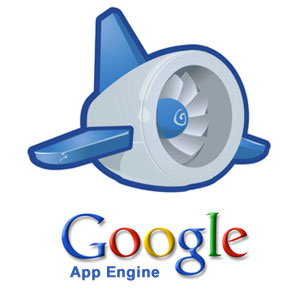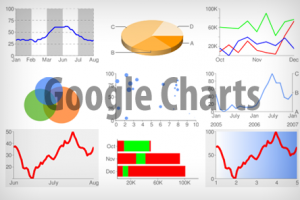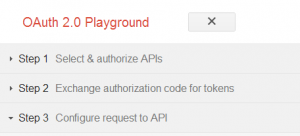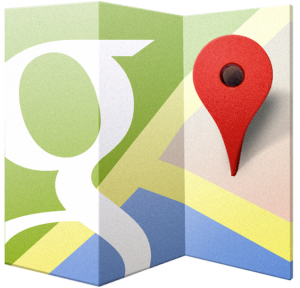Tag Archives: google
Google Datastore Query Get By ID & Filter – Code Example

Following are code samples on Google App Engine Datastore Query and how to get entities by id and based on filters. Get Entity By Id Pay attention to the code “datastore.get(KeyFactory.createKey( “savedreport”, reportId). “savedreport” is the name of entity. DatastoreService datastore = DatastoreServiceFactory.getDatastoreService(); Entity entity = null; try { entity = datastore.get(KeyFactory.createKey(“savedreport”, reportId)); } catch(EntityNotFoundException e) { e.printStackTrace(); } Get Entity By One Filter Pay attention to “setFilter” method Filter createdByFilter = new FilterPredicate(“created_by”, FilterOperator.EQUAL, userId ); Query query = new Query(“sqm”).setFilter( createdByFilter ); DatastoreService datastore = DatastoreServiceFactory.getDatastoreService(); List entities = datastore.prepare(query).asList( FetchOptions.Builder.withLimit( count ) ); Get Entity By Multiple Filter Pay attention to usage of multiple FilterPredicate …
Code Example – User Authentication with Google App Engine Java Applications

The article presents quick code samples that could be used to adopt Google User authentication service. These strategies have been used in the google app, http://agilesqm.appspot.com. Following key aspects are presented in this article. Web.xml configuration to restrict access to pages Use Google User service Web.xml configuration to restrict access to pages With following code in web.xml, one could restrict access to one or more pages in matter of no time. You could try on how below configuration works by accessing the page, http://agilesqm.appspot.com/createreport and you would be sent to Google login if not yet logged in on the browser. <security-constraint> <web-resource-collection> <web-resource-name>createreport</web-resource-name> <url-pattern>/createreport</url-pattern> </web-resource-collection> <auth-constraint> <role-name>*</role-name> </auth-constraint> <user-data-constraint> …
7 Reasons for Java Developers to Adopt Google App Engine

The article represents top 7 reasons why one would want to adopt Google App Engine to do quick Java applications. If you are a bunch of java developers who wants to try out your idea and give a demo to a select group of users, I would recommend you to try out google app engine. Following are top 7 reasons: Eclipse IDE Support As Google supports Eclipse IDE plugin for working with google app engine, it is very helpful to get started quickly in no time. All that is required is download Google App Engine plugin within your Eclipse and start immediately by creating a Google web application. You would find …
How to Convert JSON String to Google Datatable for Google Charts

The article presents the solution to some of the issues that I faced while converting JSON string to Google Datatable. The primary reason for me to write an article on seemingly looking trivial issue is that I ended up spending lot of time in doing research and reaching to the solution. Problem Scenario/Issues One AJAX request is made to the server to retrieve the JSON data and draw the Google chart (LineChart in this example) using this JSON data. Following is how the JSON data looks like after being sent from the server-side code: {cols: [ {id: ‘task’, label: ‘Task’, type: ‘string’}, {id: ‘hours’, label: ‘Hours per Day’, type: …
Lessons from Google on Distributed Storage System

The article lists down the lessons learnt by Google Engg. team while they implemented Google BigTable, a distributed storage system, which is used to manage structured data of more than 60 Google products or so. Read further about Google BigTable on this page. KISS Principle for Simpler Design & Coding With distributed systems bound to be complex and the related codebase expected to evolve over a period of time, it may be good idea to keep the design and coding simple for ease of code maintenance and debugging. One could apply the KISS principle by breaking down the problem into smaller pieces and do the design and coding appropriately. Read …
OAuth Explained with Google OAuth 2.0 Playground

The article represents concepts around OAuth based authentication with help of Google OAuth 2.0 Playground, Thanks to Google! Google OAuth 2.0 playground could be accessed at https://developers.google.com/oauthplayground/ . It may be recommended to check the article on OAuth Authentication in order to understand the OAuth with the help of OAuth playground in a much better fashion. Google OAuth 2.0 Playground is a Google application put out there on the web for users to achieve some of the following objectives: Work with various different Google APIs and study/understand API feed data in form of request/response (JSON response). Understand OAuth based authentication and underlying technology consisting of concepts such as authorization code, authorization, request/refresh tokens etc. In …
Tips to Load Your Webpage Faster based on Google’s Pre-* Recommendations

The article recommends 4 simple tips to load your webpage in faster manner based on Google Pre-* technology recommendations. These tips are based on suggestions by Google Engineer, Ilya Grigorik in his presentation that could be found on this page. Do note that most of these (such as pre-fetch, pre-resolve etc) are also part of their PageSpeed initiative. While I was reading the presentation, it struck me as to check out on who is leading the internet browser share in the market. Following is the plot I could come up with data based on browser usage statistics. And, the winner is Google Chrome. Thus, I found it relevant enough to …
Google PACO for Tracking Trends on Personal Stuff

The article talks about features & benefits of Google PACO mobile app that one could use for tracking analytics data in relation with personal stuff. Thanks for reading it further. Ever wanted to check on how are you doing in relation with some of the following habits on the personal front: Software Developer: How much time are you devoting on some of the following: Learning new technologies by reading one or more webpages/books Trying out/evaluating new tools & frameworks (this could be tracked on weekly basis rather than daily basis) Physical Training (PT): How much time are you spending daily on doing one or more PT exercises such as running? In …
Top 5 Cool Things with New Google Spread Sheets
Following are top 5 cool things that you could do with most recent release of Google spreadsheets: On-the-go formula applied on any column with “=”: Tried formula such as =sum(100,120,200) and pressed enter. And, I got 420 in no time. Take a look at the diagram below. Some of the formulae that could prove handy when you are working with numbers are following: TODAY() SUM or ADD MULTIPLY MINUS DIVIDE POWER Filter Views: With filter views function, one could view and analyze data by hiding the data that one wants to temporarily take out of view. With this feature, one could save multiple filter views as unique names to return to and …
Understanding Google Glass Development: How to get started?
We, the developer community, have been hopping around the development ecosystem and creating applications for web (technologies such as Java, .NET, PHP, Ruby, Scala etc) & mobile devices such as smartphones (running iOS, Android), tablet (running iOS, Android) etc. This year saw the release of Google Glass devices. Google has been doing enough to publicize the google glass and this is expected that there shall be need for Google Glass applications if Google Glass has to be accepted by mass users. That would require developers like us to take a stab at it and create some apps for Google Glass. If you are very new to google Glass, please read …
Go & .Net – New Additions to Google Glass Developer Kit
Till few weeks back, it was only Java, PHP and Python programmers who had the necessary support from Google Glass Mirror APIs for development purpose. Now, there are two more additions to the programming languages using which one can develop using Google Glass Mirror API. They are: GO (App Engine SDK for GO) .NET (.NET framework 4.0 or higher, ASP .NET MVC 3 web framework or higher, A web server) Quite a good move from Google to enhance the developer ecosystem and including large number of developer community.
Top 5 Google Glasswares Architecture Principles
If you are planning to get into google glasswares development, following is the list of top five architecture principles that should be kept in mind: 1. High Usability: With google glass device in the presentation layer, and owing to smaller display area of the timeline cards on the device, it is of utmost importance to plan content (texts/images/videos) including menu items to be displayed in the simpler form on timeline cards. The most simplest of them all is to have simple texts. However, the requirements may not be that simple and need for menus can always arise. To properly design content and menu for ease of navigation takes primary seat. …
Get a Google Wallet Free with a Google Glass!
If you are planning to buy one of those google glass device, be prepared to get google wallet account whether you like it or not.:-) This is because you may not be able to buy google glasses in other ways except by using google wallet. In addition to that, even if you are trying to gift the google glass to someone else, the recipient would require to have an account with google wallet for him/her to receive the support from Google. To add to the above, a person owning a google glass device also needs to maintain his/her google wallet account to receive after sales support. The information can …

I found it very helpful. However the differences are not too understandable for me